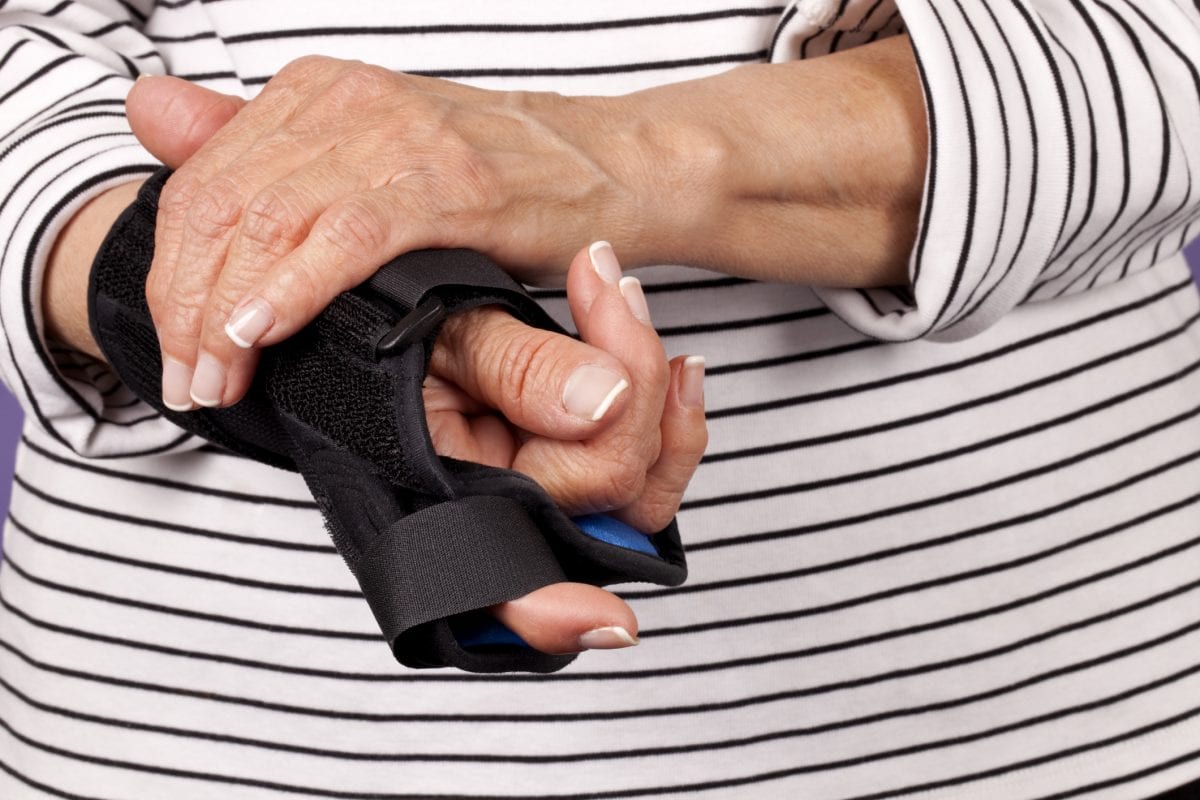Is a nagging pain in your thumb keeping you up at night? Are your thumb and fingers stiff from typing, texting, and holding your smartphone for prolonged periods of time? While opposable thumbs are magnificent evolutionary markers that make much human day-to-day life easier, they are not totally without risk of injury.
As a highly used joint in the body, thumbs withstand a ton of wear and tear over the years. Depending on factors like your age, occupation, and health condition, a thumb brace might be an answer to your prayers.
Reasons for Wearing a Thumb Brace
Common conditions and injuries that may lead you to thinking about buying a thumb brace include:
Carpal Tunnel Syndrome – when the narrow passageway in your wrist becomes inflamed from overuse or injury, it can pinch the median nerve running through it, leading to wrist, thumb, and hand pain.
Arthritis – some types of arthritis including rheumatoid arthritis, a chronic inflammatory condition, and osteoarthritis, a progressive degeneration of the cartilage that cushions joints, can lead to swelling, pain, and stiffness of joints, especially those in the hand.
Injury – you may have heard of colloquial terms for thumb injuries including “skier’s thumb” or “gamekeeper’s thumb”. These commonly refer to the stretching or tearing of the ulnar collateral ligament in the thumb. Additional thumb injuries like sprains, fractures, and dislocations often occur from sudden impact, like falling to the ground, or overuse.
What Does a Thumb Brace Do?
As a support for your thumb joint, a thumb brace can provide a host of benefits including stabilizing the affected joint to limit range of motion and aid healing. In addition, thumb braces can offer compression to fight inflammation of the thumb joint (which helps reduce pain), as well as support movement and protect your joint when you do certain activities like playing golf or skiing.
Thumb braces vary greatly in size, shape, and composition. Depending on your injury or condition, a brace that fully stabilizes the wrist and thumb may be in order. Simpler injuries, on the other hand, may require smaller stabilizers like a basic thumb splint, guard, or sock that slides over the joint.
How Do You Find the Right Thumb Brace for You?
If you are looking to simply prevent further injury and address pain, you may pick a different thumb brace than someone who is rehabilitating from a fracture or sprain of the joint. Start a dialogue with your treating physician to discuss what type of thumb brace is best for you as well as how often and long you should wear one. Keep these factors in mind as well:
Flexibility – some thumb braces offer more range of motion than others and can be worn during normal activity (i.e. working, typing, etc), while others are composed of a rigid plastic that fully immobilizes the joint.
Fit and adjustability – an ill-fitting thumb brace can do more harm than good, especially if you are healing from an injury. While you may not need a custom brace made for your thumb, you may still need to measure your thumb and pick a brace according to your size and needs. Adjustability, i.e. being able to tighten and loosen the brace or insert and remove splints, can play an important role as well in making sure you have a brace that adjusts to your activity levels.
Material – Because the brace is worn on your hand, it may come into contact with myriad substances and objects. Choosing a material that is breathable and comfortable as well as simple to clean will be in your best interests for long-term use.
Final Considerations
In the event of an injury to your wrist/hand or increase in thumb pain, consult a doctor right away for examination and diagnosis. In addition to using orthotic aids like a thumb brace to stabilize and support the thumb joint, you may be recommended to try ice therapy, topical aids, stretching and strengthening exercises, as well as pain and anti-inflammatory medications. In extreme cases, surgical intervention may be required (i.e. to reconstruct the thumb following a fracture).
Thumb braces are easier than ever to find – look online or at your local pharmacy or big box store.








